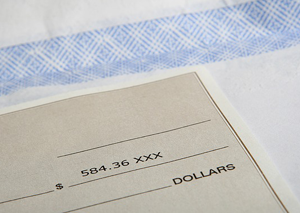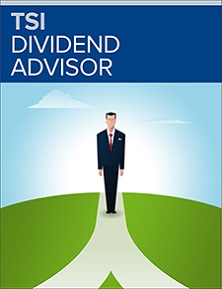Topic: Dividend Stocks
15 key tips for investing successfully in TSX dividend stocks
How to determine if TSX dividend stocks will keep on paying, and raising, their dividends
At TSI Network we think investing in TSX dividend stocks is one of the best investment decisions you can make. Dividends serve as a way for companies to share the wealth they accumulate through the successful operation of their businesses.
Dividends are cash outlays that an unsuccessful company could never produce. A history of dividend payments is one thing that the best TSX dividend stocks all have in common. These payouts are drawn from earnings and cash flow and paid to the shareholders of the company. Typically, these dividends are paid quarterly, although they may be paid annually or monthly as well. Dividends can produce as much as a third of your total return over long periods.
|
NEW! The rising power of dividends Dividends can turn an average portfolio into a strong, fast-growing one. Over the years, Pat McKeough has shown how high quality dividend stocks can add tremendous earning power to a portfolio. Now, Pat shows you how to make it work for you in his complete guide to dividend investing. It’s ready to download now.
|
Here are 15 tips for investing in TSX dividend stocks:
- Dividends rarely get the respect they deserve, especially from beginning investors. That’s because a dividend paying stock’s yearly 2% or 3% or 5% yield barely seems worth mentioning alongside yearly capital gains of 10%, 20% or 30% or more. But dividends are far more reliable than capital gains. A stock that pays a dividend of $1 this year will probably do the same next year. It may even raise it to $1.05.
- Dividends can grow. Stock prices rise and fall. Interest on bonds or GICs holds steady, at best. But the best TSX dividend stocks like to ratchet their dividends upward over time—holding them steady in a bad year, and raising them in a good one. That also gives you a hedge against inflation.
- Dividends are a sign of investment quality. Some high growth companies reinvest profit instead of paying dividends. But fraudulent and failing companies hardly ever pay dividends. So if you only buy stocks that pay dividends, you’ll automatically stay out of almost all the market’s worst stocks.
- Look for dividends that are paid even during market downturns. For a true measure of stability, focus on companies that have maintained or raised their dividends during economic and stock market downturns. These firms leave themselves enough room to handle periods of earnings volatility. By continually rewarding investors, and retaining enough cash to finance their businesses, they provide an attractive mix of safety, income and growth. The best TSX dividend stocks respond to tough economic times by doing their best to maintain, or even increase, their payouts.
- Watch out for unusually high dividend yields. When investing in TSX dividend stocks, a high yield can sometimes be a danger sign rather than a bargain. For example, a high growth dividend stock’s yield could be high simply because its share price has dropped sharply (because you use a company’s share price to calculate yield) in anticipation of a dividend cut.
- Seek a history of paying a dividend. Look for companies that have been paying dividends for at least 5 to 10 years when investing in dividend stocks. Companies can trump up quarterly earnings, issue press releases to appear to be making strong progress, but they cannot fake dividends.
- The best TSX dividend stocks can feature hidden assets. Take a close look at the balance sheet of dividend stocks. Can you spot any hidden assets? For instance, when a company buys real estate, the purchase price goes on its balance sheet as the historical value of the asset. Over a period of years or decades, the market value of that real estate may climb substantially. But the historical purchase price remains unchanged on the balance sheet. You have to look closely to spot this hidden value. At times, the hidden assets in a company’s real estate can even come to exceed the market value of its stock.
- The best high growth dividend stocks dominate their markets. We look for dividend stocks that have industry prominence, if not dominance. Our reasoning, besides brand recognition, is that major companies can influence legislation, industry trends, etc. to suit themselves. Minor firms can’t do that.
- Look into registering for DRIPs. Dividend reinvestment plans allow shareholders to receive additional shares in lieu of cash dividends. Registration will generally cost $40 to $50 per company. The investor must then notify the company that he or she wishes to participate in the company’s DRIP. As well, DRIPs don’t require the participation of brokers, so shareholders save on commissions.
- Bookkeeping is easier with synthetic DRIPs. There are also separate dividend reinvestment plans that are available through most discount brokers (these are called “synthetic DRIPs”). The bookkeeping is simpler with these DRIPs. Under these plans, brokers will reinvest dividends on shares that you hold in your account. Not all your dividend stocks may be eligible for these plans.
- Use a DRIP as a bonus, not a sole reason to invest. Many investors make their investment choices solely on the basis of the existence of the DRIP option. We think the availability of a DRIP is only a bonus, rather than a reason to invest by itself. Investing only in stocks that offer DRIPs limits both investment choice and opportunity.
- Pay your taxes. Investors should remember that taxes are still payable even on dividends that are reinvested.
- Leverage your tax break. Canadian taxpayers who hold Canadian dividend stocks get a tax break. Their dividends can be eligible for the dividend tax credit in Canada. This means that dividend income will be taxed at a lower rate than the same amount of interest income. Investors in the highest tax bracket pay tax of 29% on dividends, compared to about 50% on interest income. Investors in the highest tax bracket pay tax on capital gains at a rate of roughly 25%.
- Seek conservative stocks, even in dividends. If you stick with conservative dividend stocks, the income you earn can supply a significant percentage of your total return. Conservative stocks such as utilities usually offer sustainable dividend yields in addition to prospects of steady growth.
- Dividends can’t be faked. Unlike stocks that use deceptive marketing to dupe investors, dividends are impossible to fake—either the company has the cash to pay dividends or it doesn’t.
When we pick dividend stocks for our TSI Dividend Advisor, there are 8 key factors we use to determine whether a company is likely to keep on paying, and raising, its dividend.
- 2 points for a long-term record of dividend payment. Steady dividends are the prime measure of strength and stability. We trace a company’s dividend record over the past 10 years or more.
- 2 points for a recent dividend increase. We trace increases over 5 years, to get a timely reading on the company’s commitment to dividend increases.
- 1 point for management’s public commitment to a dividend. Executives don’t like to be called out by the media or shareholders for failing to keep their word.
- 1 point for being in a non-cyclical industry. Resource and Manufacturing stocks are more likely to reduce their dividends when the economic cycle is against them. Stocks in more stable sectors get an extra point.
- 1 point for limited exposure to exchange rate/political risk. Exchange rate risk can often be offset by strong revenues. But we shun political risk.
- 2 points for an attractive balance sheet. We insist on a strong balance sheet with a manageable level of debt. How a company spends its money is important, too.
- 2 points for a record of earnings and cash flow. A strong balance sheet can only be maintained with a regular revenue and earnings to generate steady cash flow.
- 1 point for industry prominence. Companies that anticipate advances in their industry and withstand strong competition also have the confidence to pay dividends year after year.
With these dividend stock ratings, we have accurate measurements we can use for stocks in three categories:
- 10 points or better are stocks with the Highest Sustainability Rating;
- 7 to 9 points are stocks with Above Average Dividend Sustainability;
- 4 to 6 points are stocks with an Average Dividend Sustainability Rating.
You can see at a glance just how likely it is that a stock you own will keep on paying you a dividend. And by extension, just how long this company is likely to be successful on all fronts.
Most dividends are a sign of investment quality, but with the drop in oil prices due to increased solar power usage, we’re seeing dividend growth slow down for companies like Chevron. How does that affect your decision to buy dividend stocks in the resource sector?
Especially high dividends can be misleading. Have you ever invested in a company with high dividends only to find out it was a mistake? How did you handle the situation?
This post was originally published in 2016 and has been updated.




Companies include Torstar, Pengrowth & Yellow pages. Sell them and take your loss.